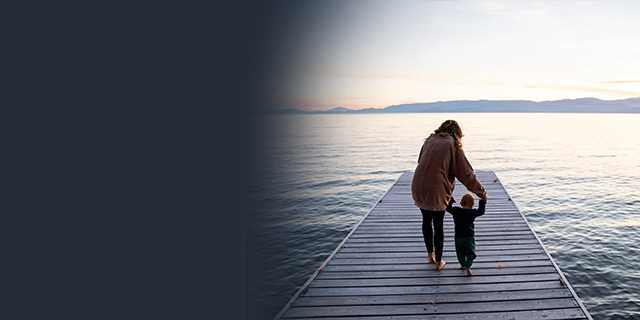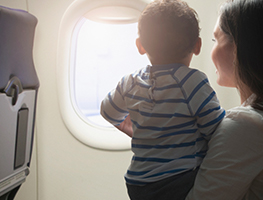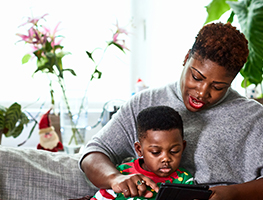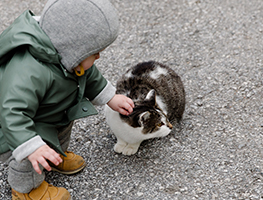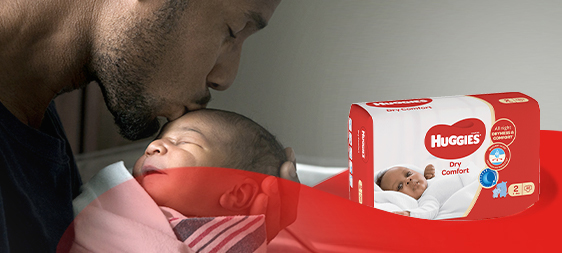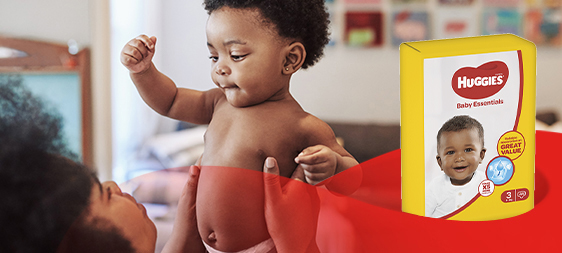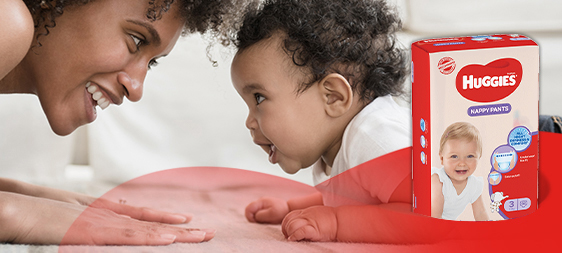A cruise can seem like the perfect family holiday – the relaxation starts as soon as you board the ship, there are endless activities for the kids, and you can visit multiple destinations with only having to unpack once. For inexperienced cruisers though, it has the potential to feel more like a floating disaster, with the idea of fun in the sun disappearing very quickly. Follow our tips to avoid hell on the high seas and get the most out of your family cruise.
Accommodation
Your accommodation options will depend on the size of your budget, which vary from small staterooms to large suites, and can make a big difference to the simple things like getting ready in the morning, or relaxing in your cabin. In a standard stateroom, it’s very easy to get under each other’s feet as the beds are extremely close together and floor space is minimal, however there can be a significant difference in cost between each option, so look into the one that best suits your needs.
Kids’ Club
Kids’ club can be the perfect solution when you want to enjoy a relaxing lunch or some time out by the pool. Newsletters are distributed to the cabins each day, informing passengers of what activities are happening in kids’ club on the following day. This is a great way to plan your time and work out which activities the kids are going to enjoy participating in. In order to take advantage of the kids’ club facilities though, you first need to register. As staff numbers are limited, the registration process can involve a lengthy wait, depending on how many kids are on-board. To avoid the queue, consider making this your first stop when you board the ship.
Activities are broken up into age groups, and generally this is fairly strict, which means siblings that fall into separate age ranges cannot be placed together. Staff also cannot administer medication, change nappies or give little ones bottles. Pagers are available to take so the centre can contact parents if required, but numbers are limited, so if you’re not in early you may miss out.
Family entertainment
There is a lot of fun for families on-board, and activity schedules are also distributed so families can get the most out of the ship’s entertainment. Staff organise plenty of games and activities for all ages, and there are also facilities that can be used at your own leisure. Keep in mind that these may be located on the top deck, which is also the most exposed part of the ship, so while you may picture a day on the water slides or a leisurely game of putt-putt, you may need to plan your times so your fun isn’t soured by strong winds. The pools are also a favourite of all ages, but be warned that most ships don’t allow kids in the pool who aren’t toilet trained – even if they are in swim nappies.
Shore excursions
Getting off the boat and exploring different places can be a great experience, and popular destinations often have a variety of family friendly shore excursions to choose from. Cruise companies have recommended tours and activities, and although it can be tempting to look for an independent option, take into account that the recommendations have already been tested for safety, value and reliability, and have direct contact with the boat to advise them if your tour is running late on return.
Some smaller ports use tender boats to ferry passengers onshore. These boat rides can sometimes be long and may be scary in rough seas, particularly for young kids. Passes for the tender boats are on a first come, first serve basis, which can make the difference between you spending an entire day onshore or just a couple of hours. To maximise your time, get the whole family to the deck where the passes are being handed out as early as possible.
Dining
Cruise ships are known for their incredible breakfast buffets, but just imagine loading up your plate with delicious goodies only to find you have nowhere to sit down and eat it. Breakfast is an incredibly busy time, so to avoid this scenario, have a plan. The best strategy is to have a family member stay with your table while another hits the buffet. Outside seating is generally not so busy, as mornings can be cold on the open waters, so go prepared with warmer clothing to give yourself another option.
Lunch tends to be more laid back, as people eat at different times and are usually happy to enjoy their meal around the pool, but dinner is another story, and one to prepare for before you have even left home. Cruise ships offer set dining times or flexible dining for those who don’t want to be locked in to the same time each night. If you opt for flexible dining, keep in mind that it depends on availability, so if you want to take the kids to dinner at 7pm but there is nothing available until 9pm, you just have to wait. Obviously with hungry, overtired children this is no fun for anybody, so choosing a set dining time that you think works best for your family is advisable, and the quicker you choose this with your booking, the better chance you have of getting your preference.
Safety
Safety is understandably a common concern for parents when going on a cruise with young kids. It’s hard to know what to expect until you’re on the boat, but taking a quick tour once you’re on-board will help set your mind at ease, and let you identify the places you feel may cause you worry. On most decks, it is impossible to get overboard, and for those areas that would make parents a bit nervous, they can usually only be accessed via heavy doors. These areas are obviously best avoided on rough seas, as are room balconies, which should only be accessed under supervision.
Parents’ facilities
As there are limited neonatal facilities available on ships, most cruise companies do not accept passengers under 12 months old. Baby food, formula, nappies and other provisions are not available on-board, so pack more than what you need just in case there are extra days at sea. There are no heating facilities in the cabins, so also pack your bottle warmer or ask staff to heat the bottle for you. There is plenty of comfortable seating throughout the ship and quiet spots are easy to find when you need them for feeding or calming. A small battery operated night-light is also a great idea for avoiding accidents, as the room lamps are usually too bright to keep on at night.
Special needs
If you, or your child, have special needs, cruise companies request notification on booking or as early as possible so they can best accommodate your needs. Accessible cabins are available, and there are facilities for vision and hearing impaired passengers throughout the ship. The minor details will vary however, so it’s best to ask your cruise company about things such as pool access, automated doors, location of ramps, and port access.
Be aware that some companies will require children to participate in what can be very loud safety drills, as well as wear a wristband for the entirety of the cruise. This can be particularly difficult or overwhelming for children with Autism or sensory issues.
Remember to ask questions that relate to your families’ needs before booking, and that preparation is the key to relaxation when cruising.

